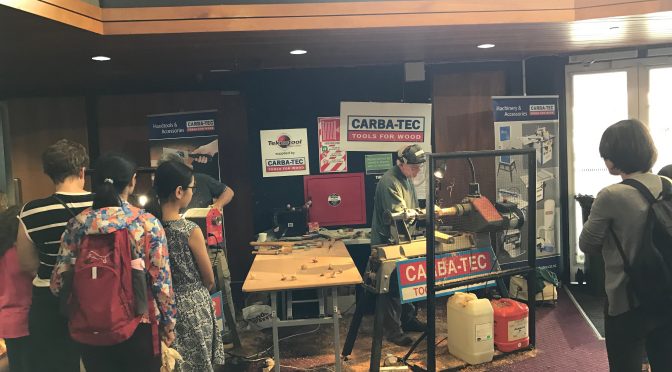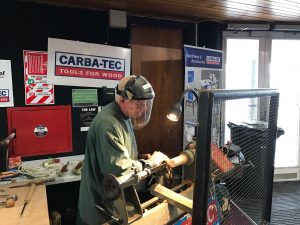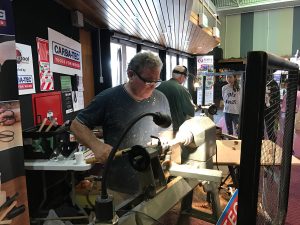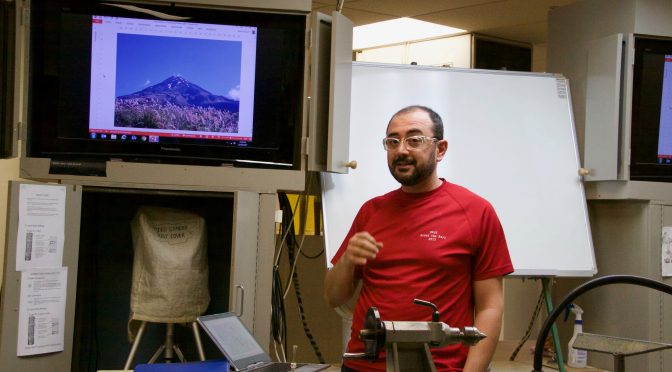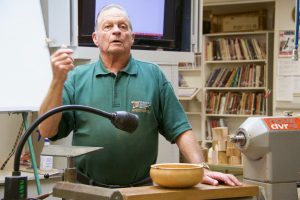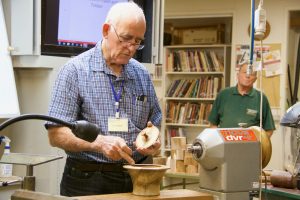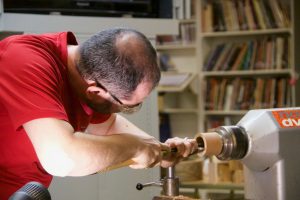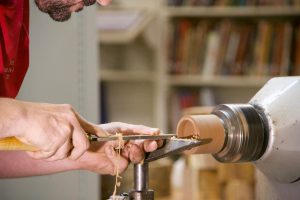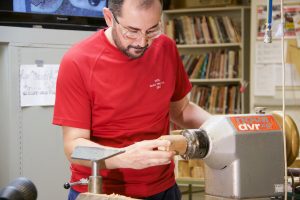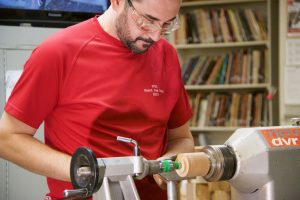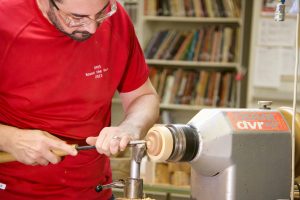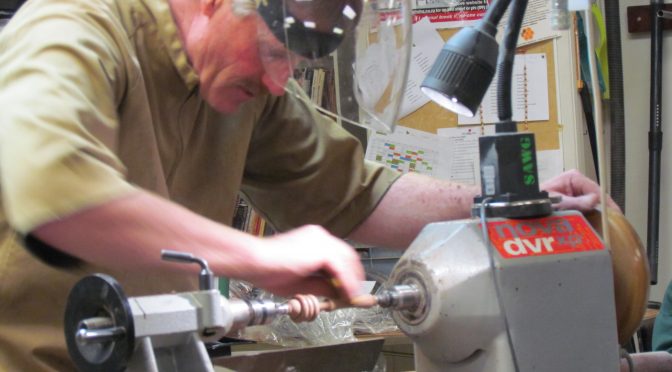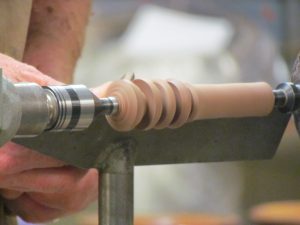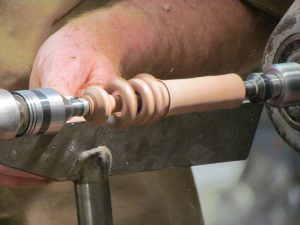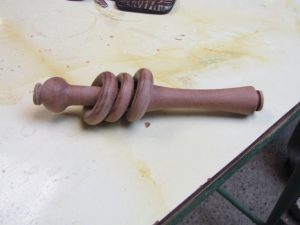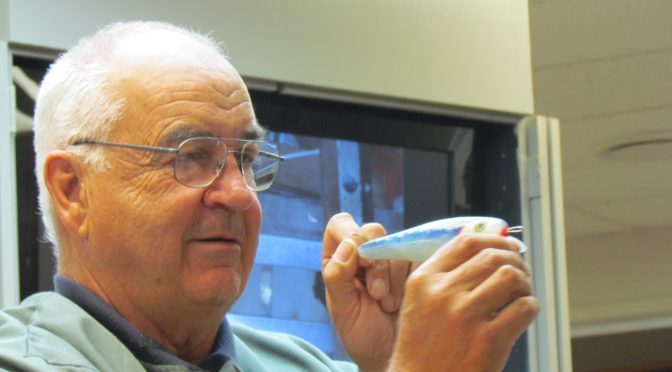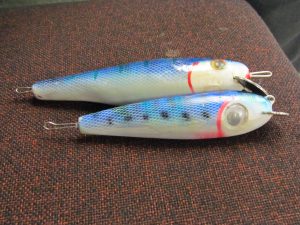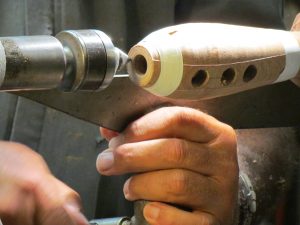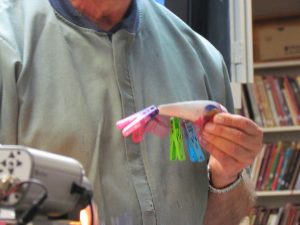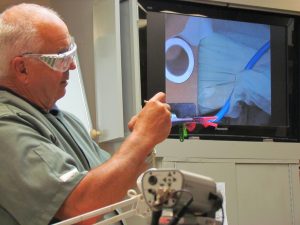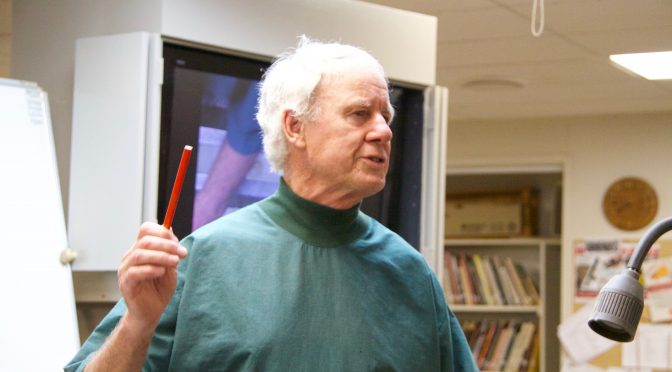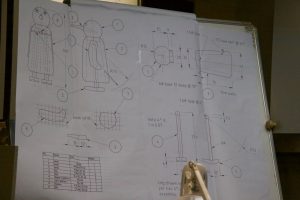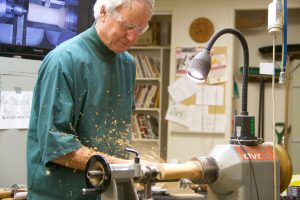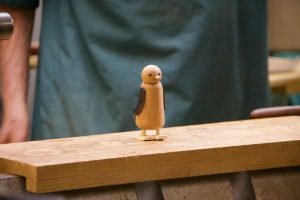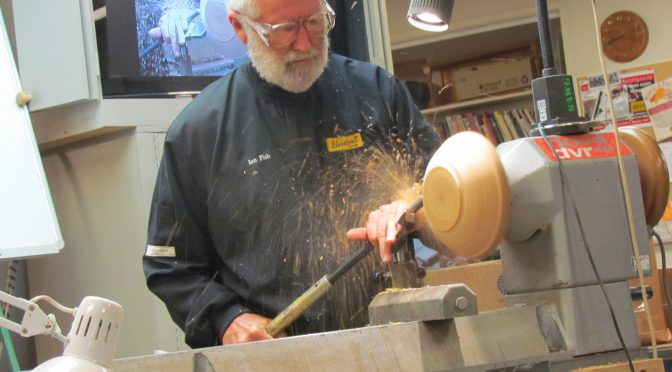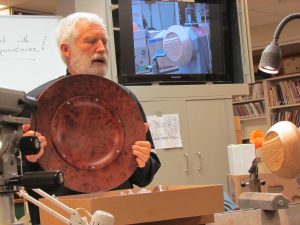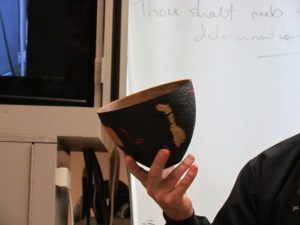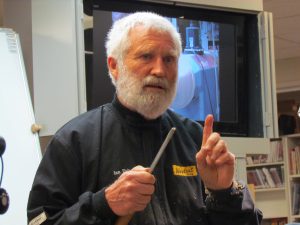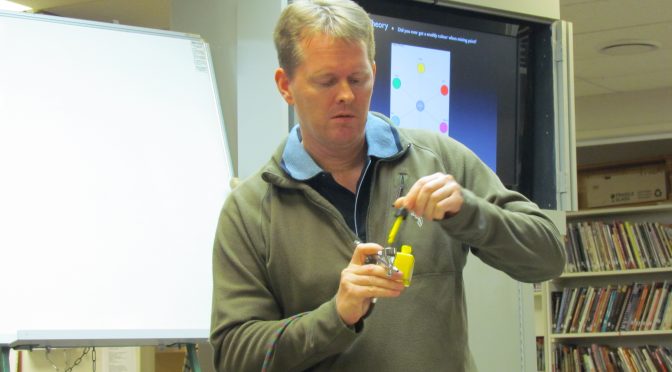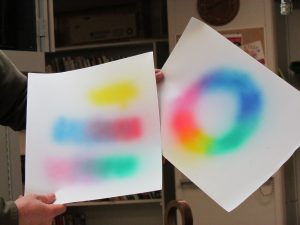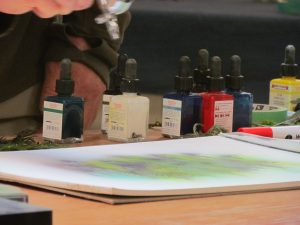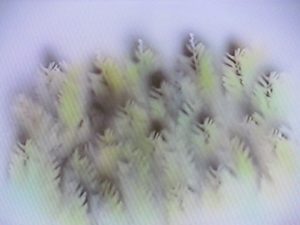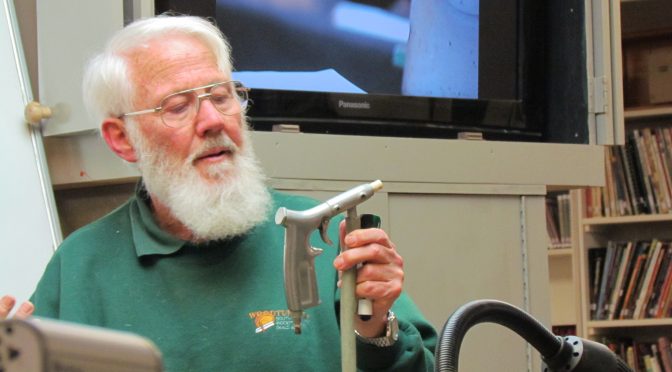Club Meeting 14 September 2016
Report by Strett Nicolson
This week we were treated to a dual demo.
First came the mini safety lecture by Alistair on using hazardous chemical materials such as resins. Fundamentally he reminded us that personal health responsibility lies with each individual. Read the labels on products you use, be aware of the chemical hazards of each product, and use safety equipment to protect yourself. Thanks Alistair for the reminder.
Dick followed up with a ‘Sand Blasting and Multi-Colouring for Dummies’ demo. He outlined clearly the various components of a sandblasting cabinet and their particular function, he explained the basic mechanics of the sand blasting gun, all this amidst a few wise cracks from the floor. He explained the value of understanding which blasting medium to use to obtain the required affect and demonstrated how to create patterns on a turned piece by making plastic templates and masking the pattern onto the wood, using tape, before blasting. The results of colouring, masking and blasting with various mediums were displayed through pre-prepared samples.
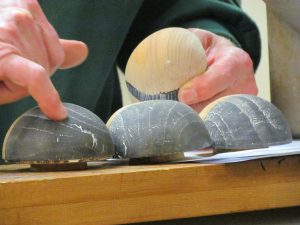
A word of warning from Dick, “Do not sand blast wet wood, it does not work”.
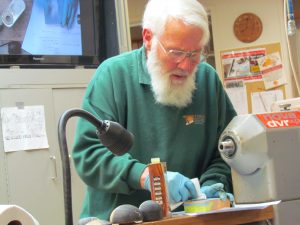
Finally he demonstrated how one can use colouring and sanding with sand paper or bushing with a wire brush to enhance or draw out the natural wood patterns and grains. Again a word of warning from Dick, “ Go slowly, do a little at a time and check the result, or you may find you sand or blast away too much material and colour and have to start over”
In response to the question, ”Are there any native woods that lend themselves more than others to sand blasting?”, Dick replied, “Go and experiment.”
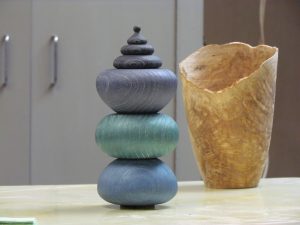
Thanks Dick for an informative demo.
